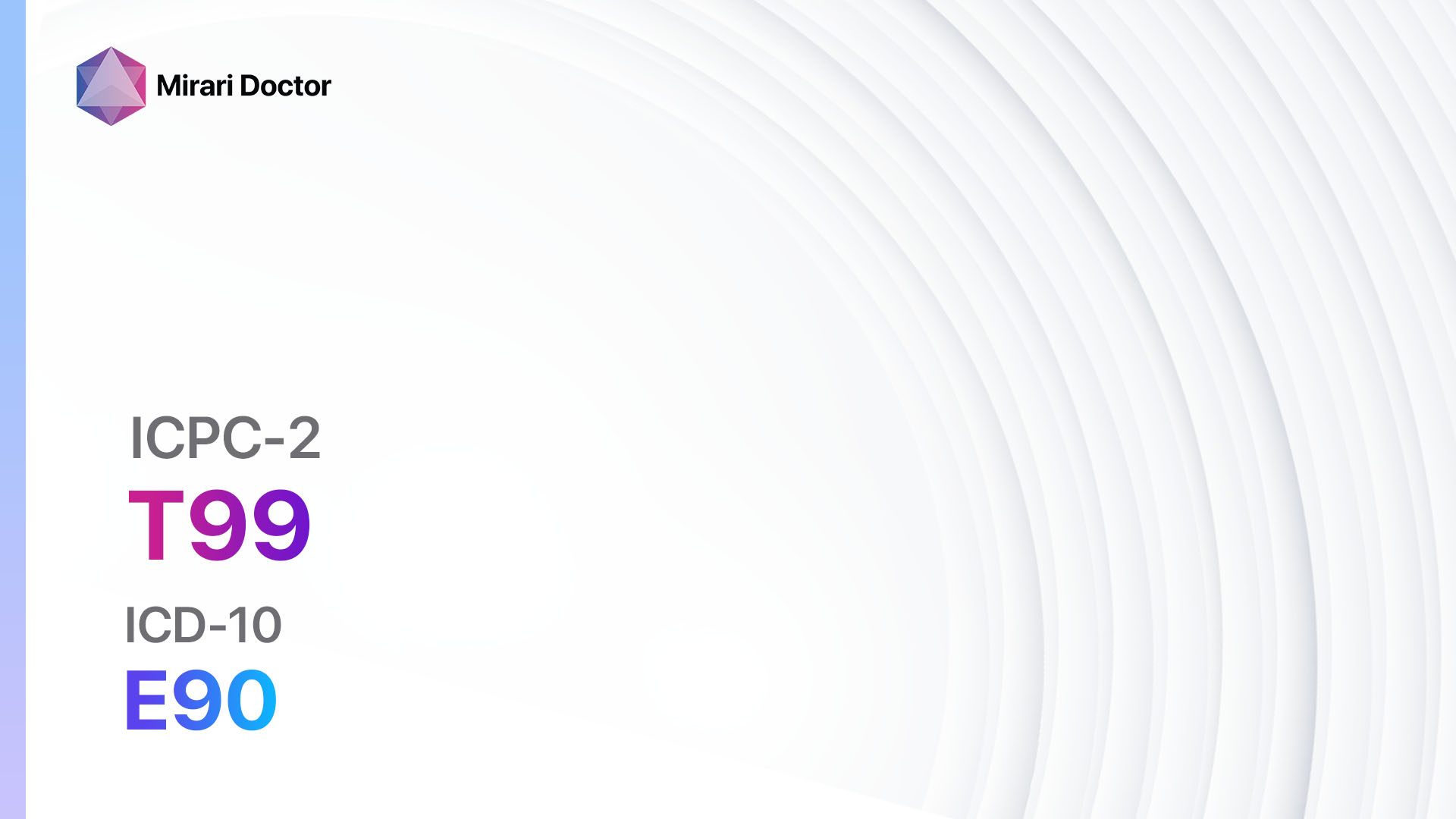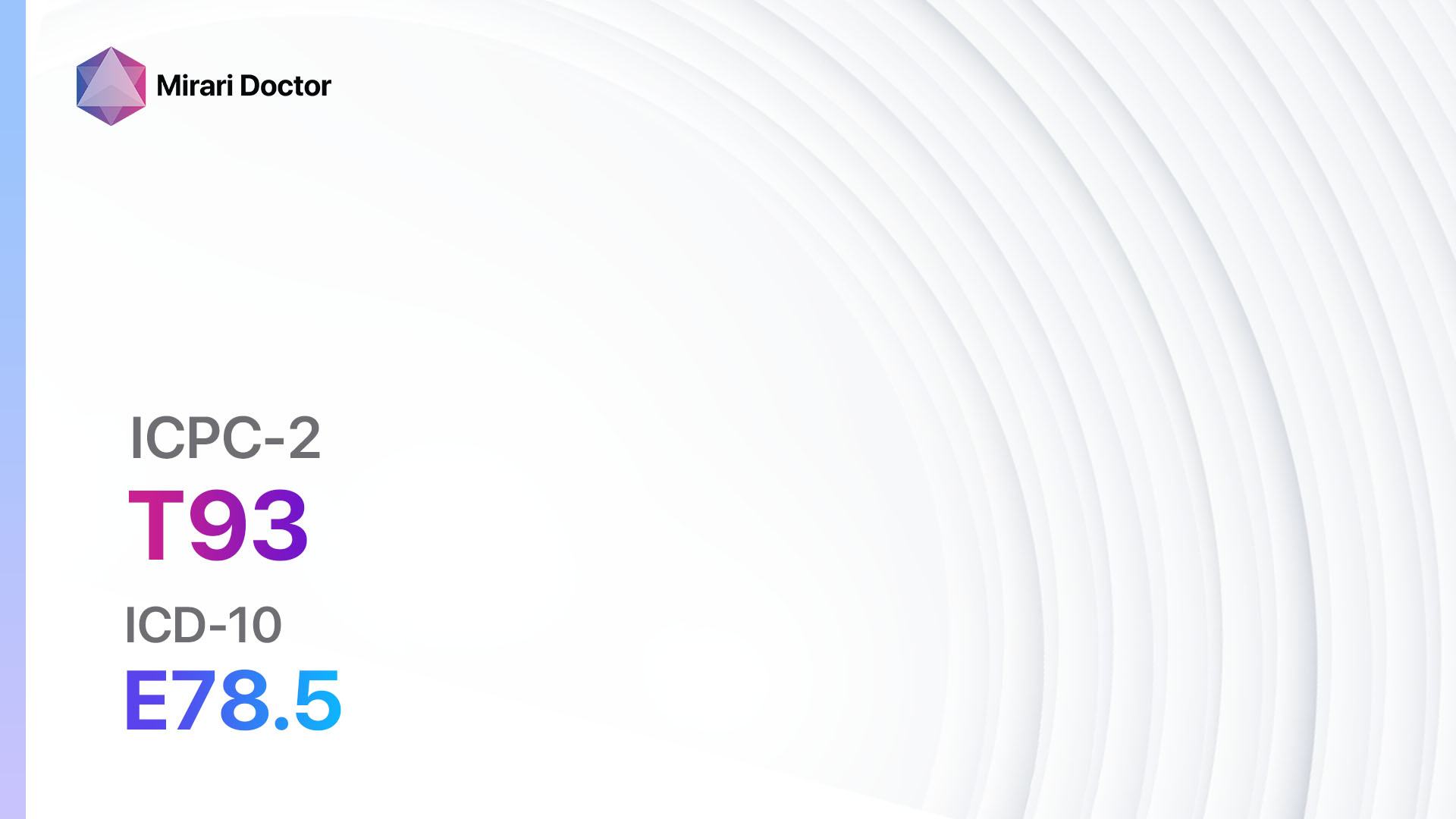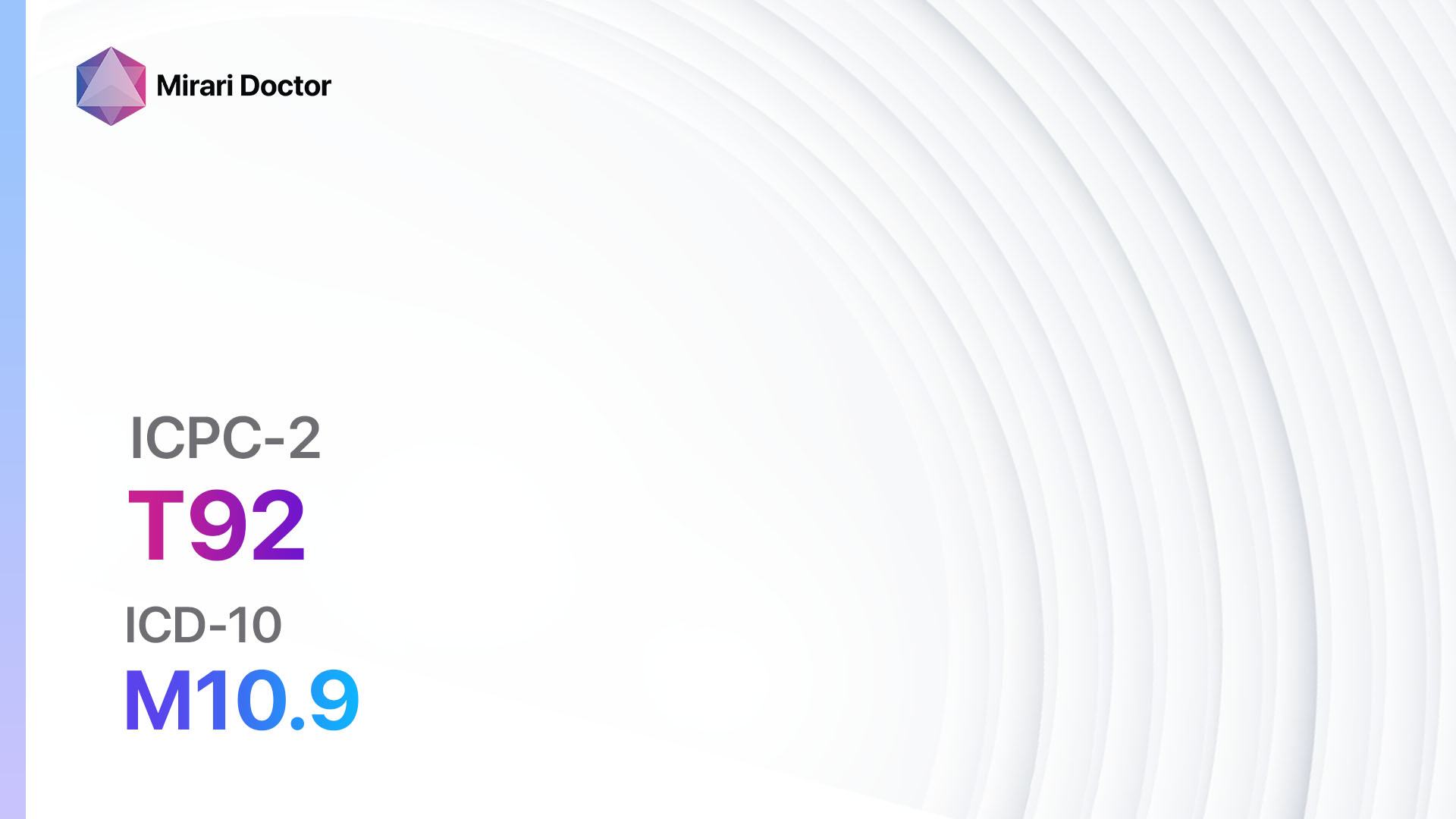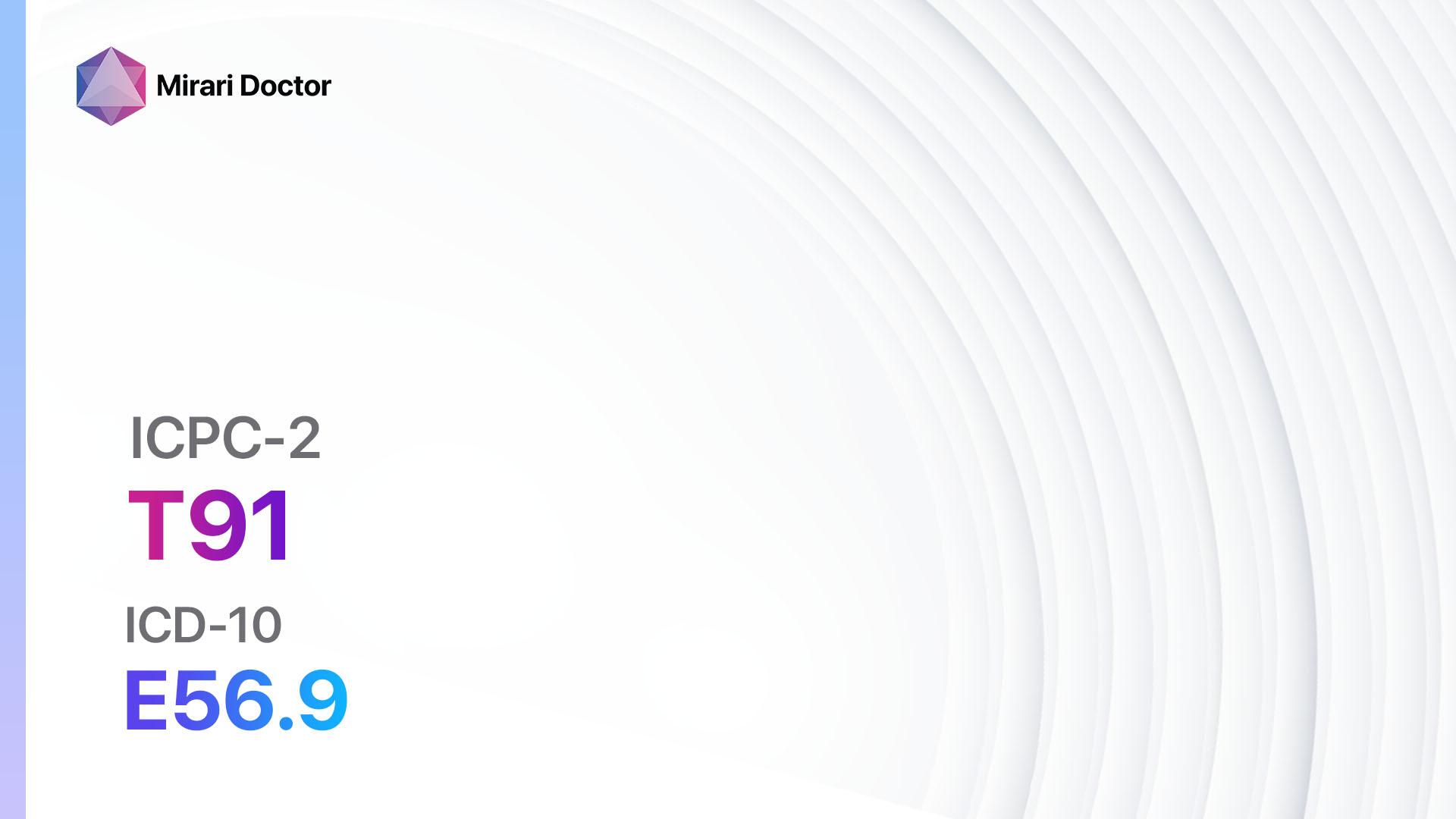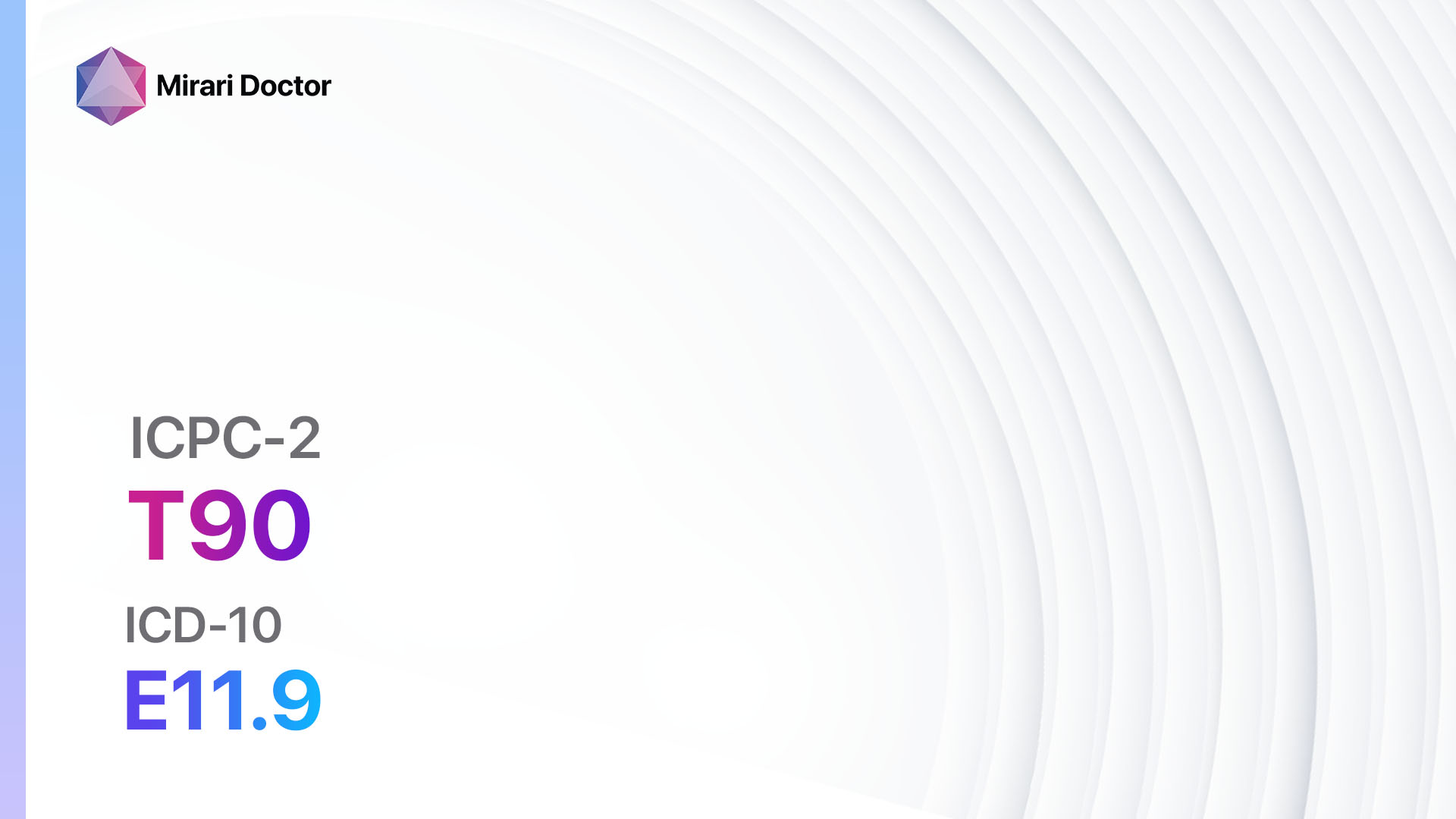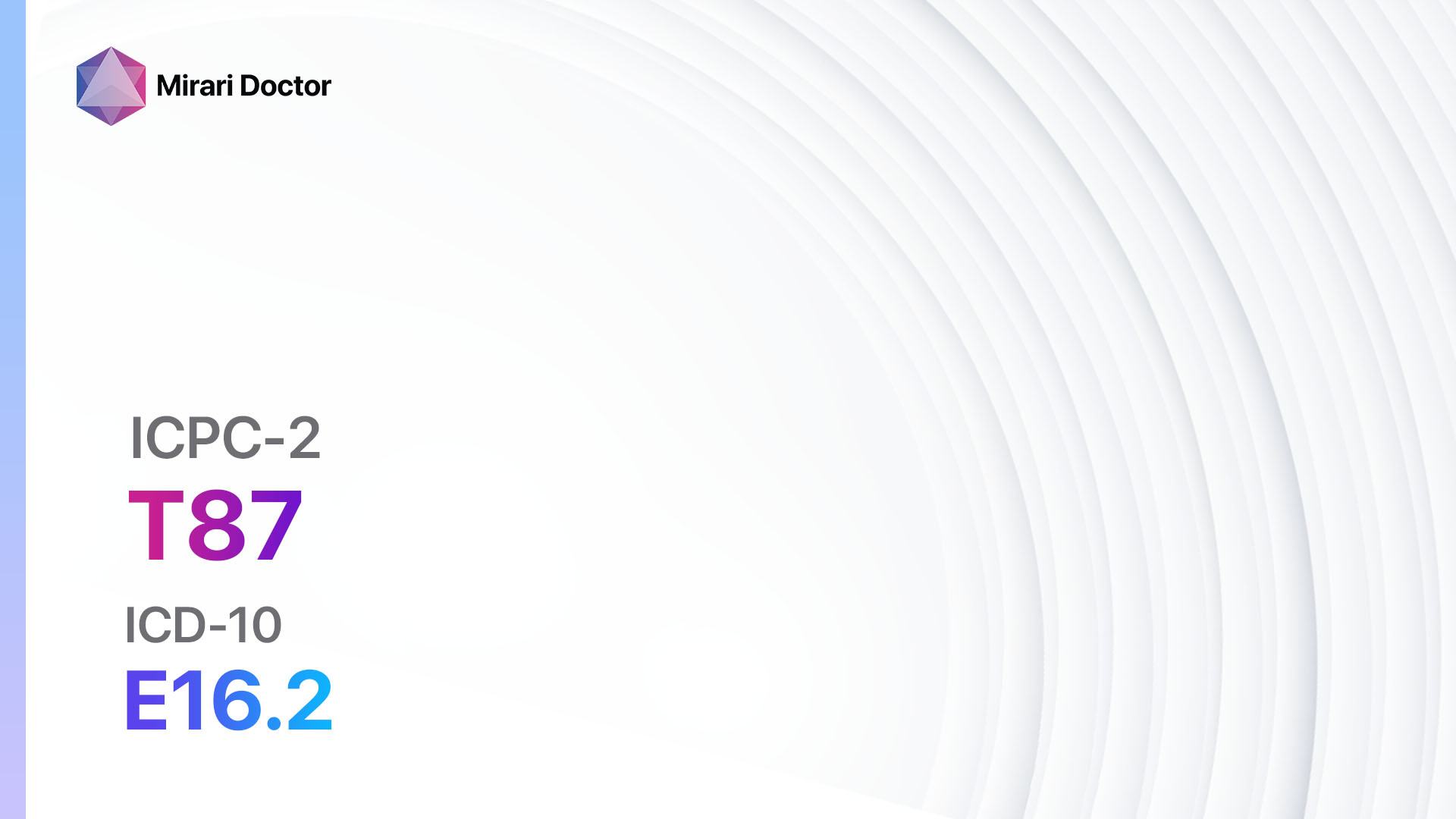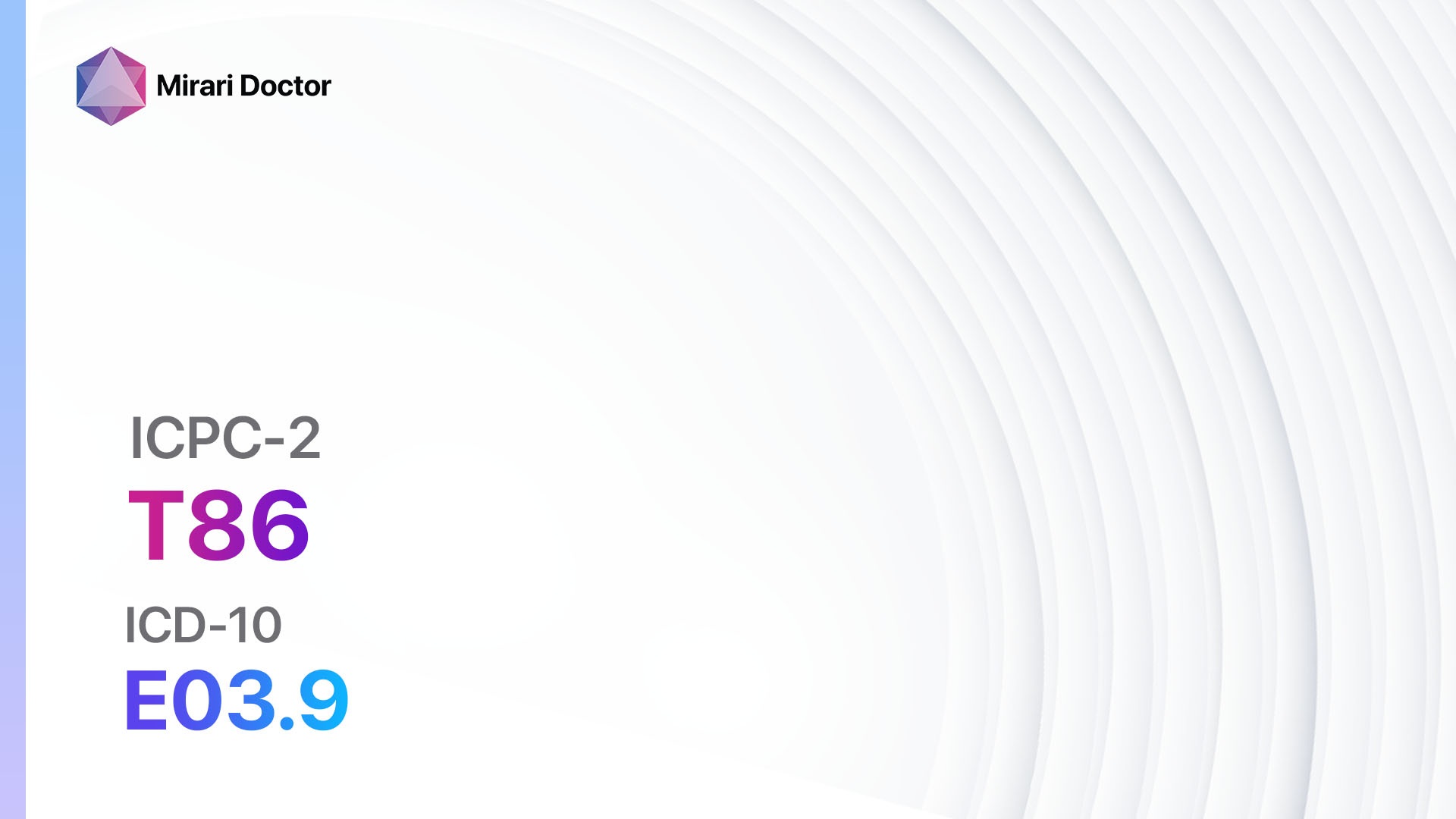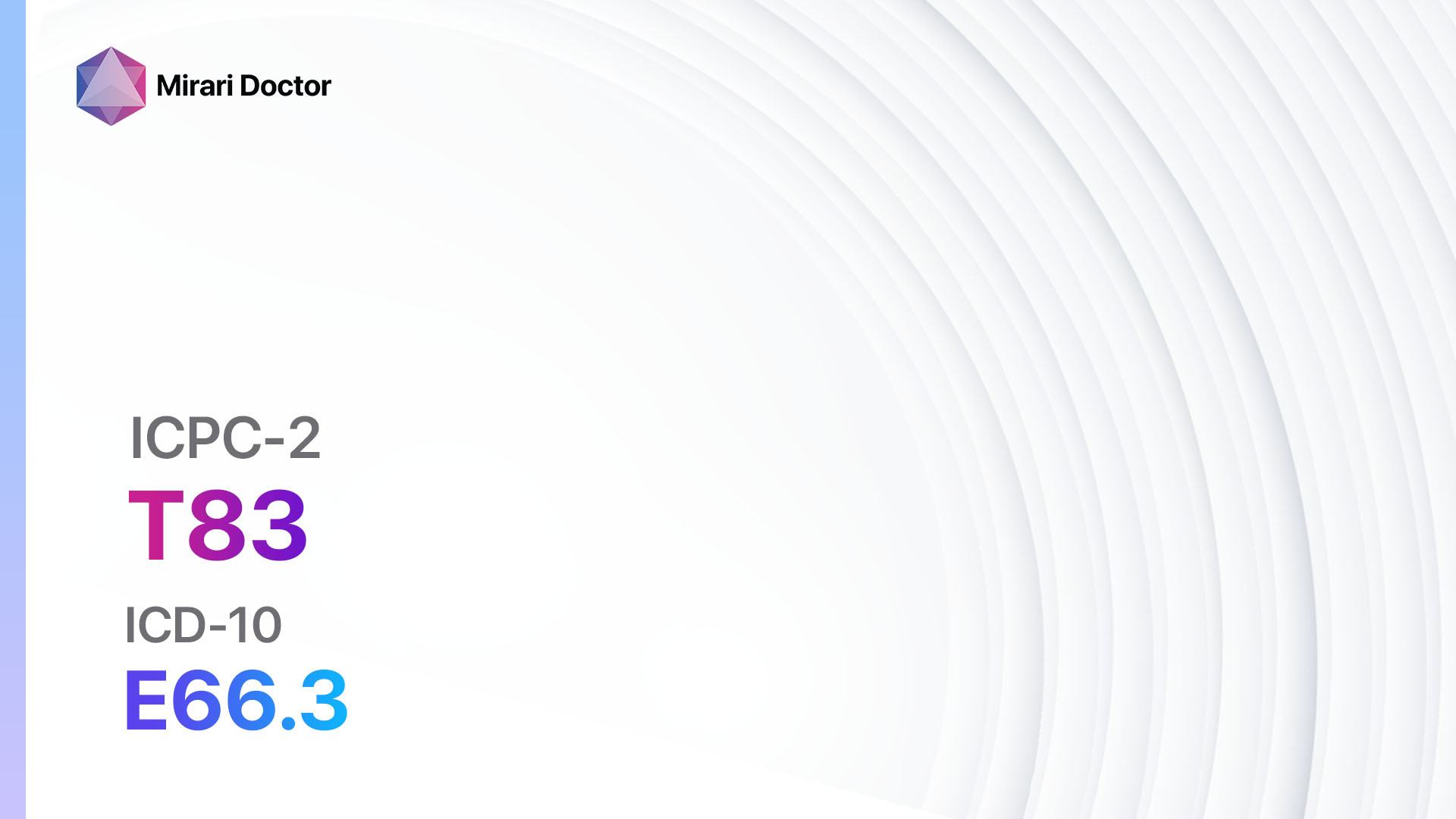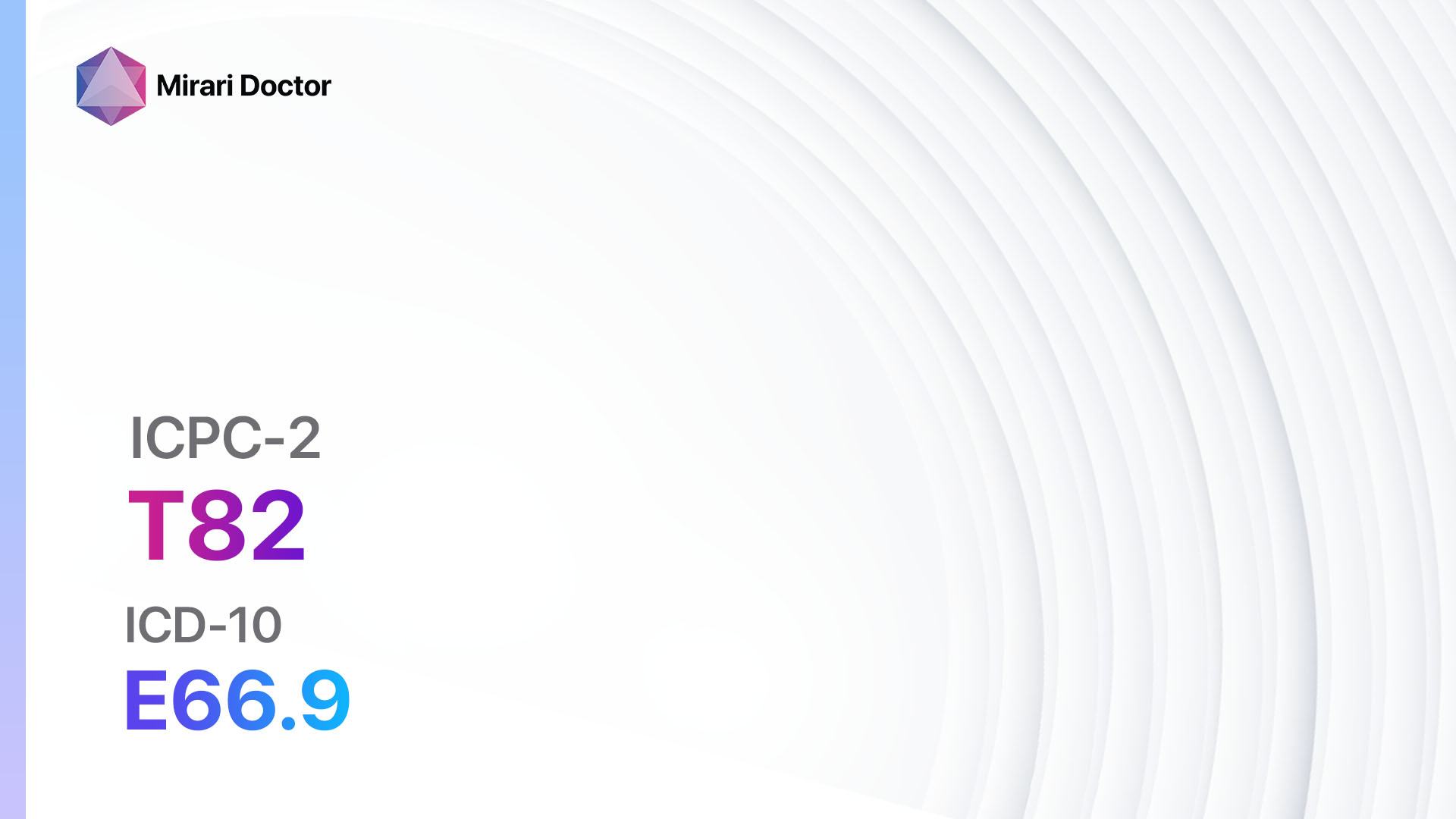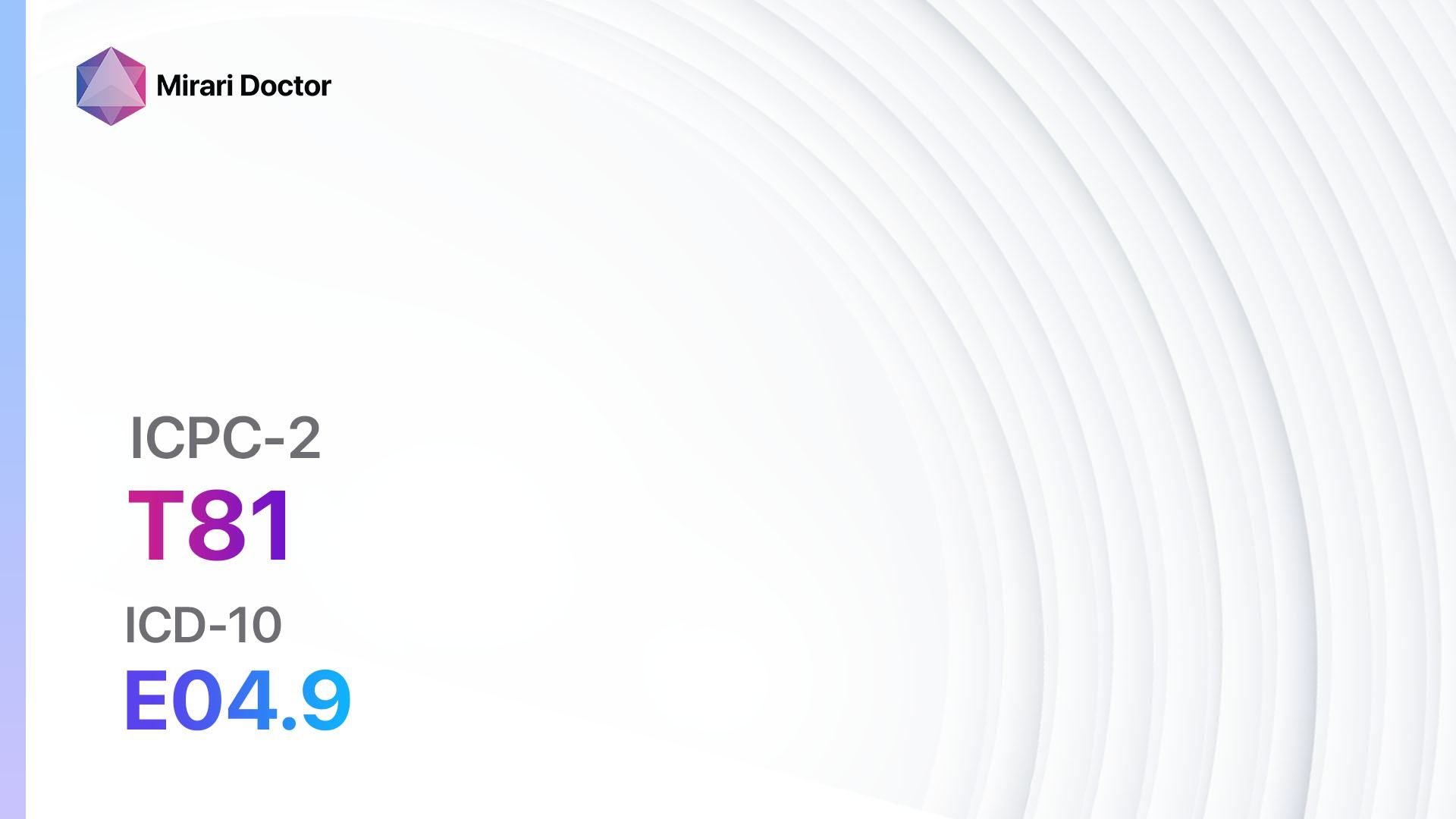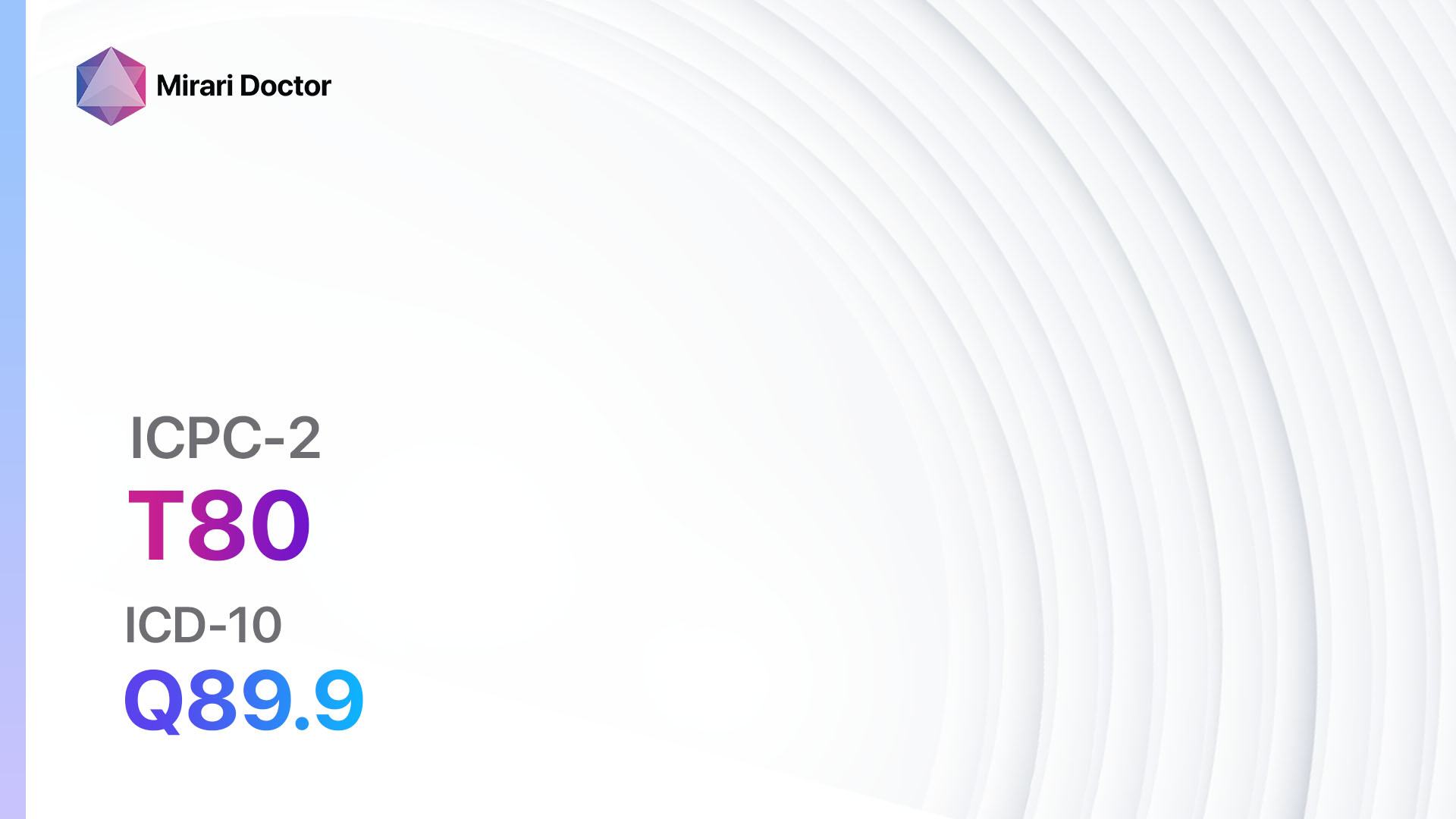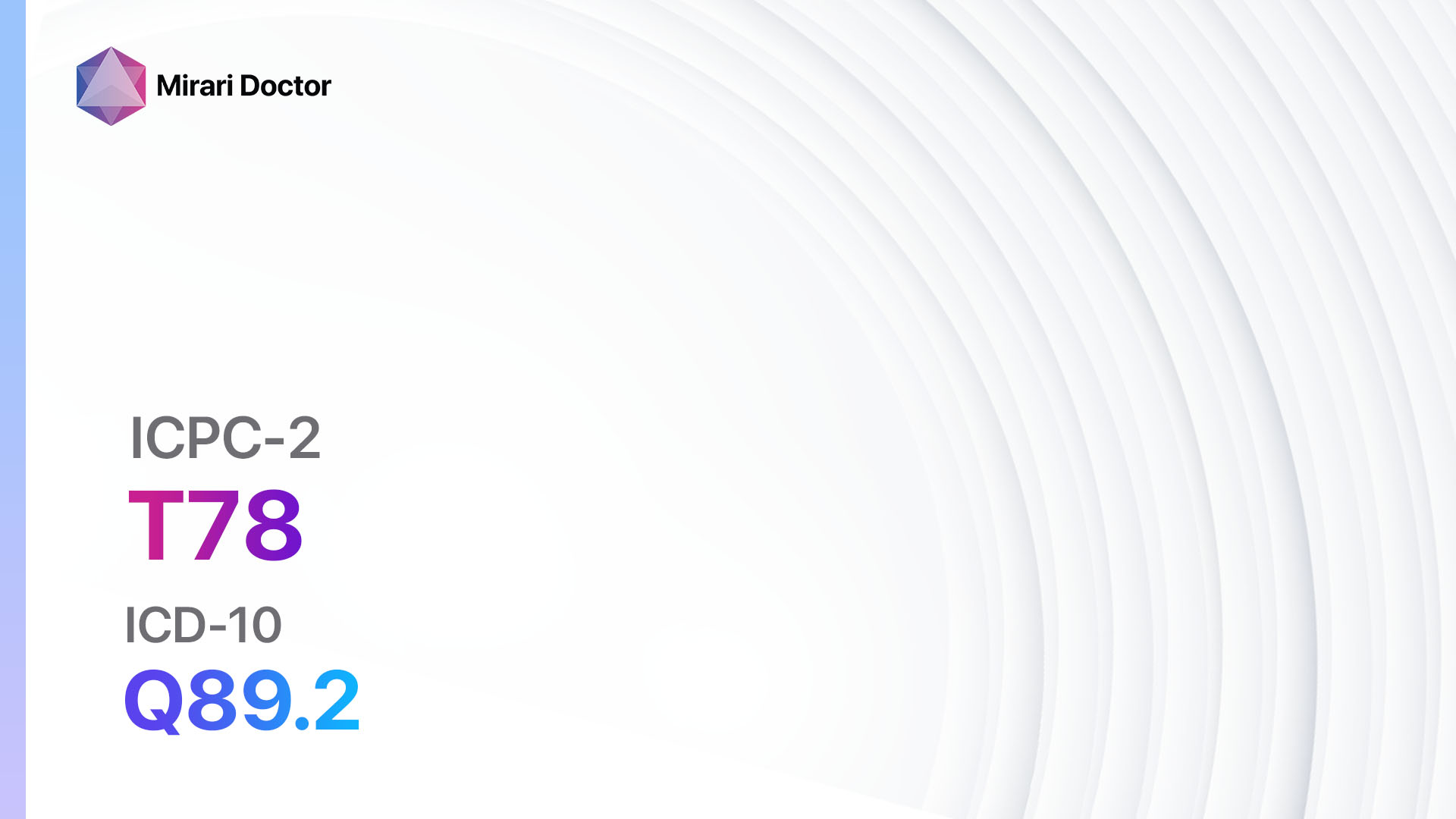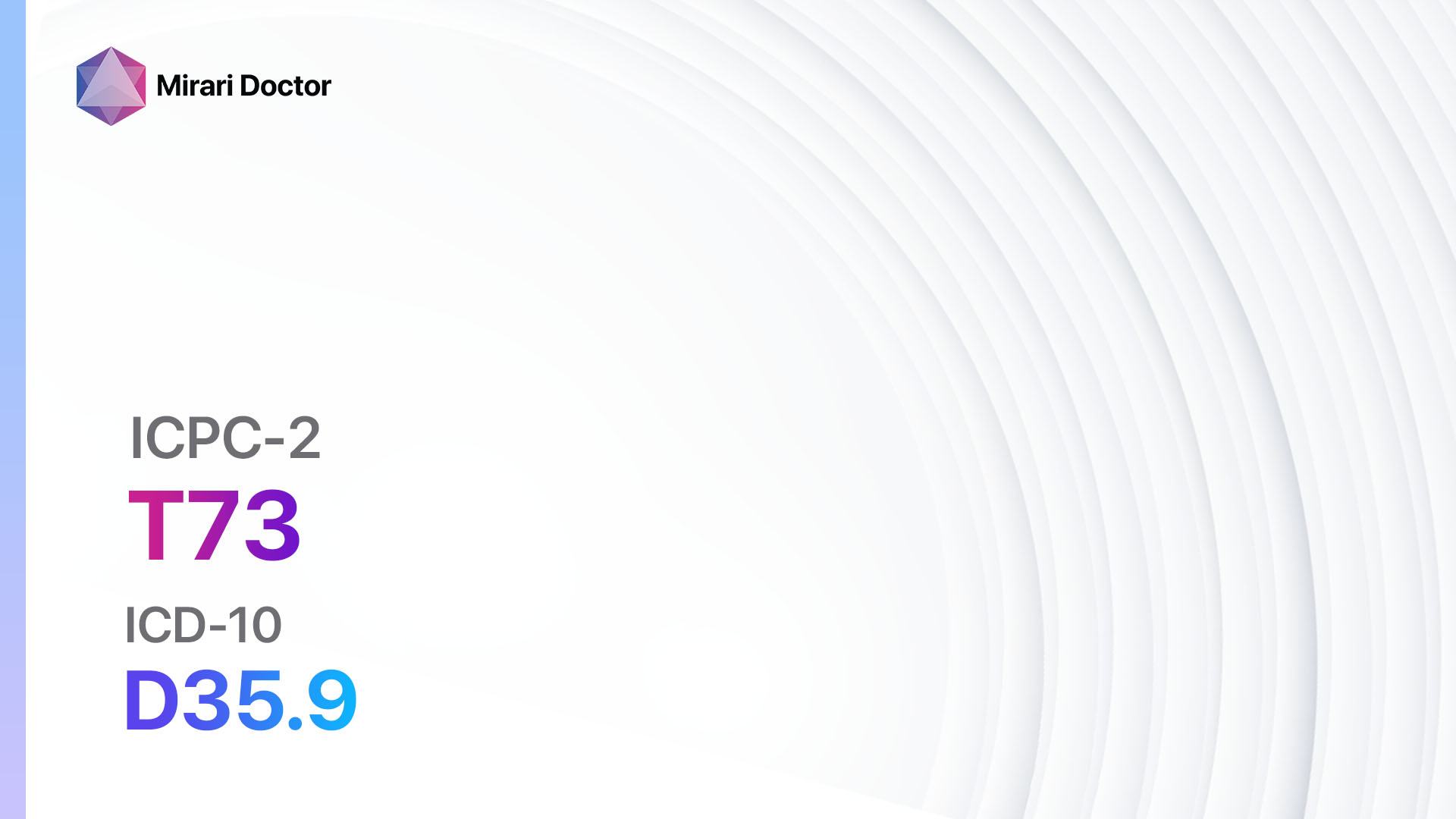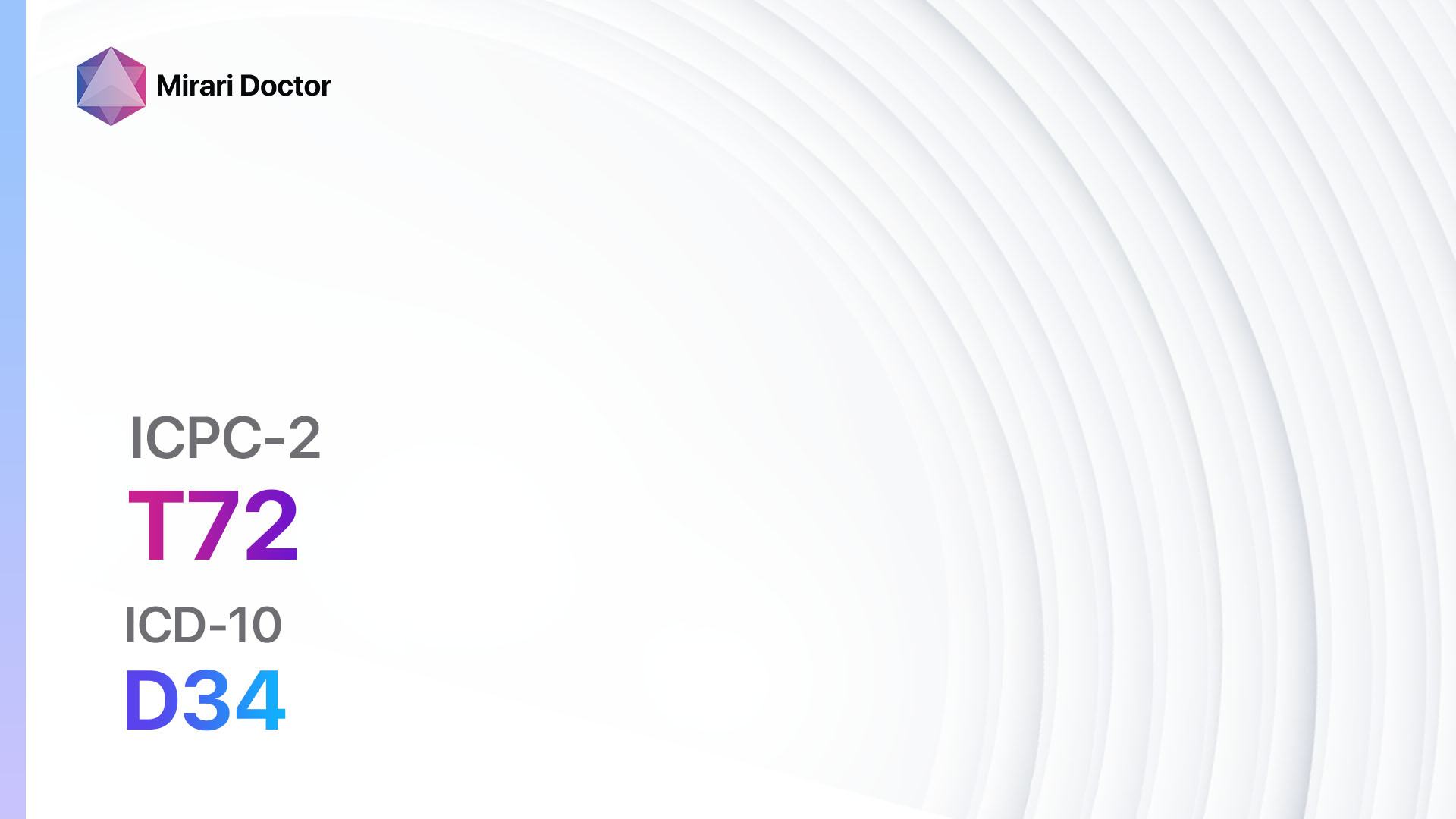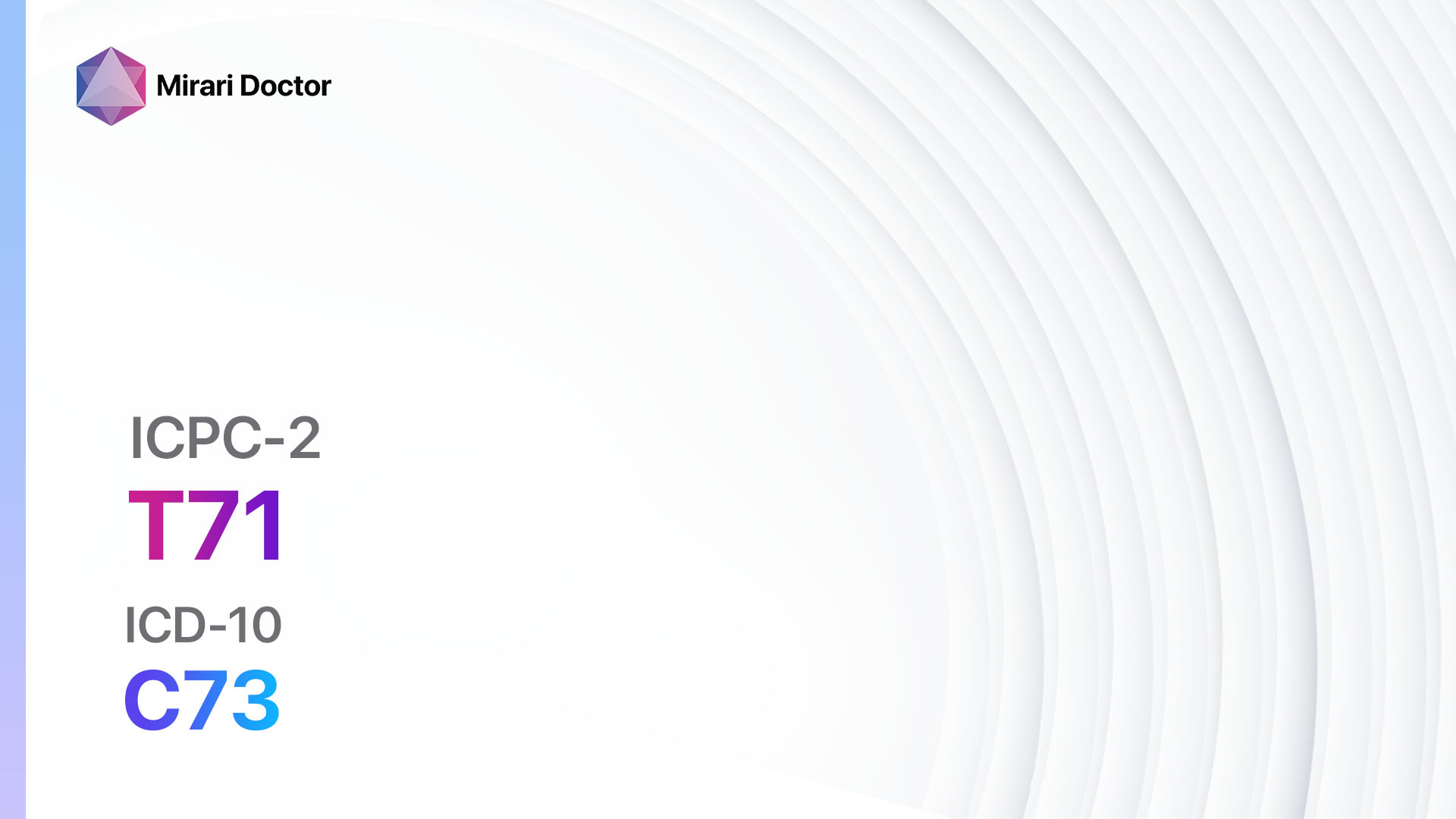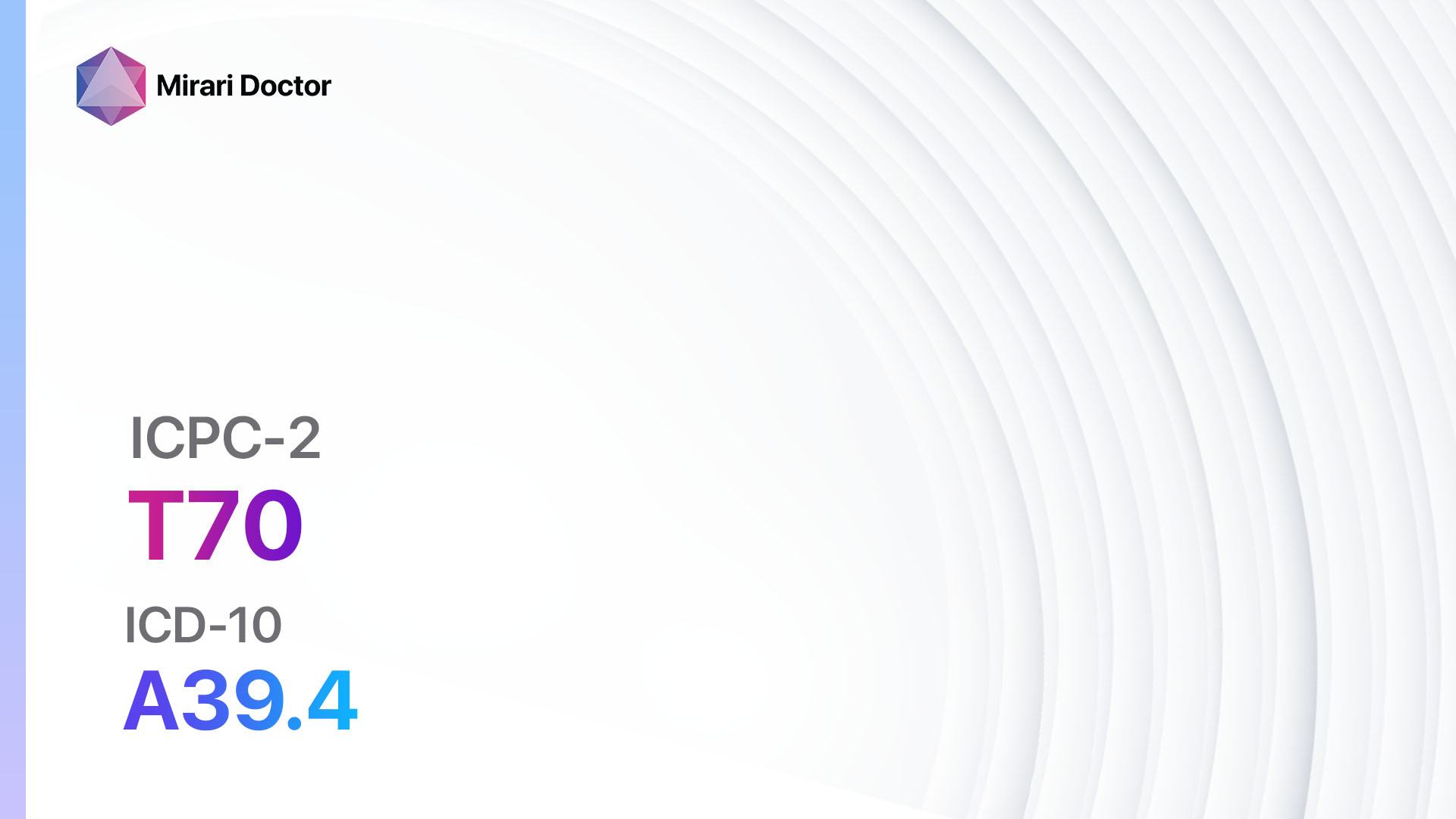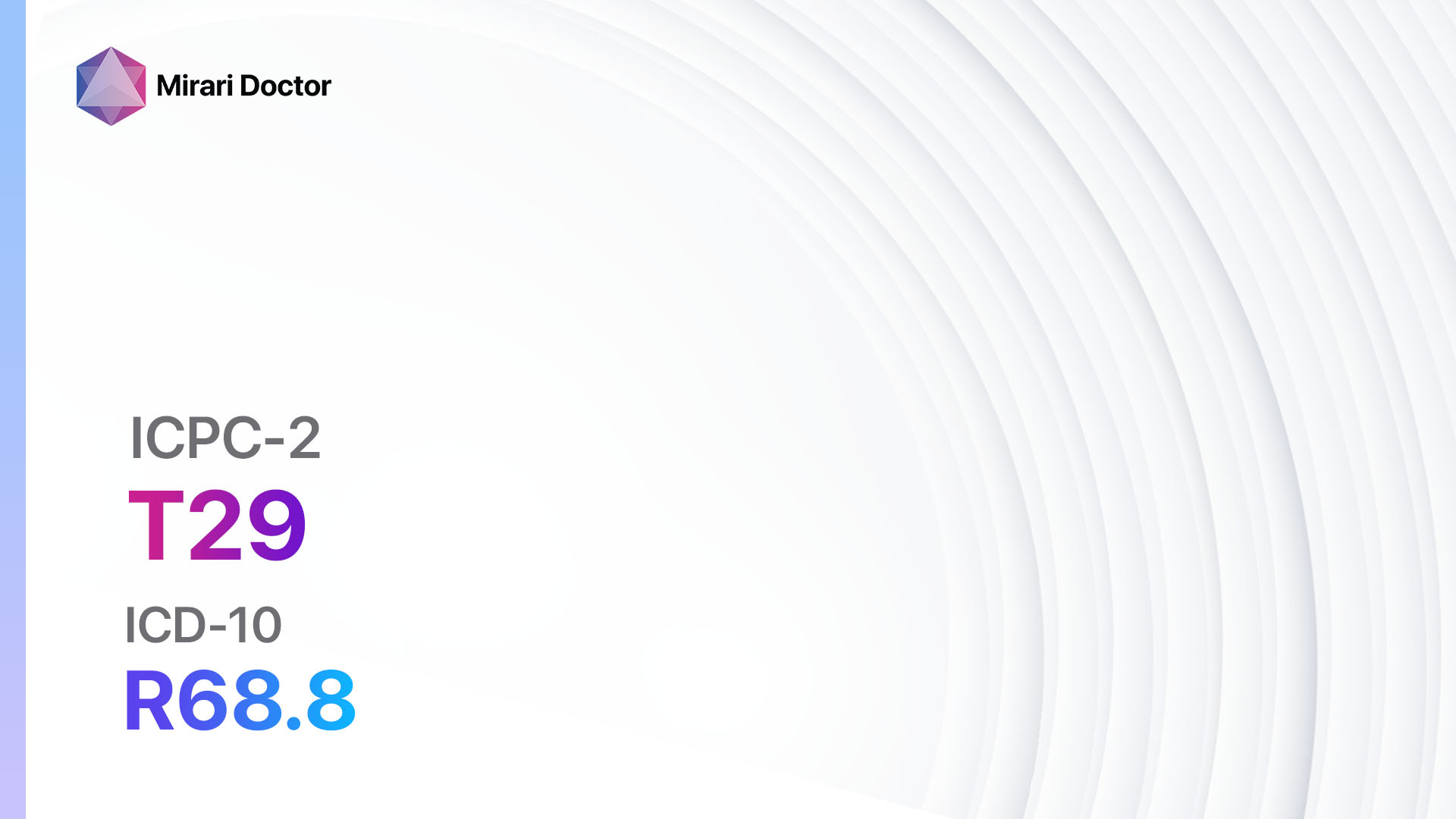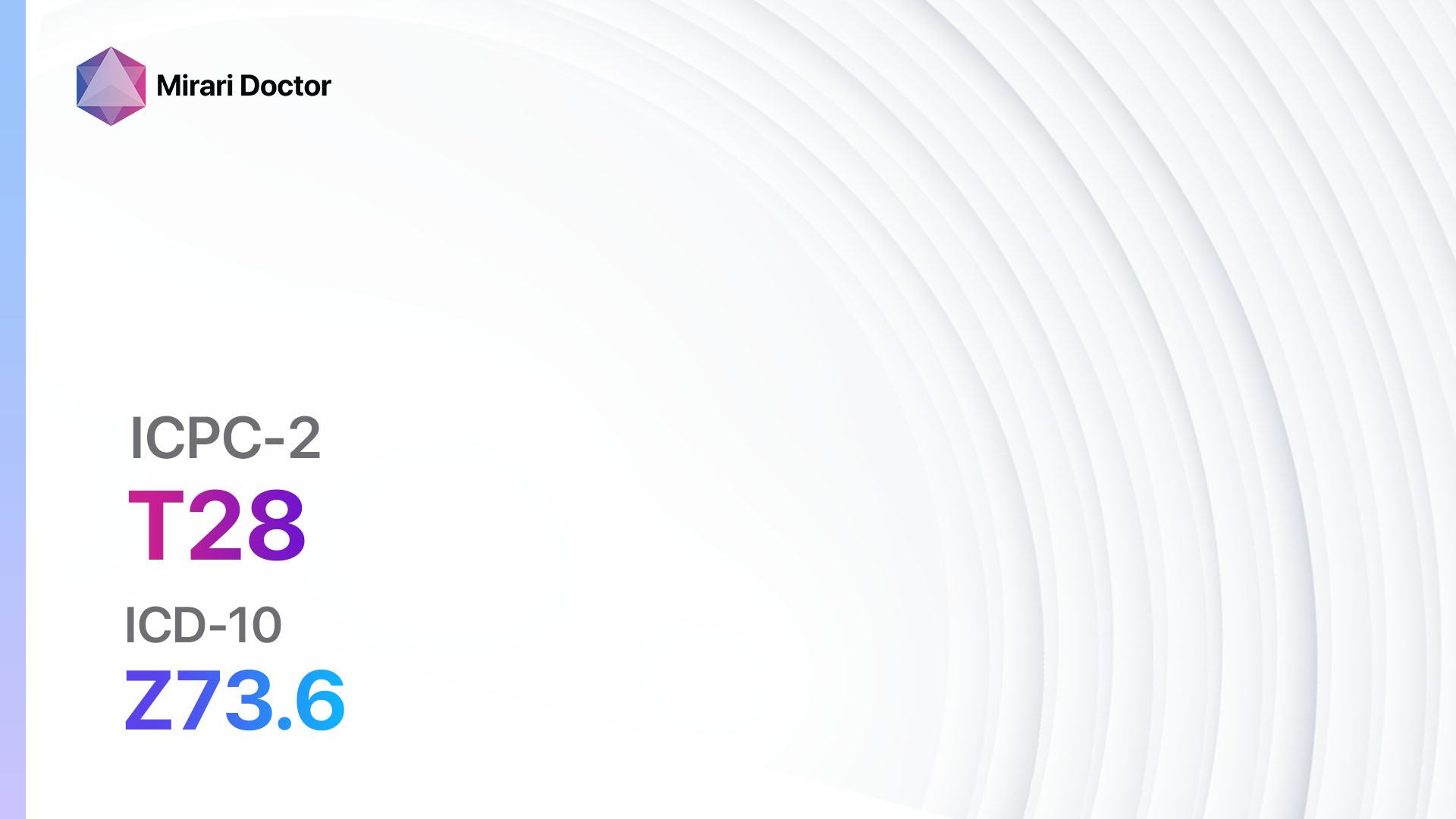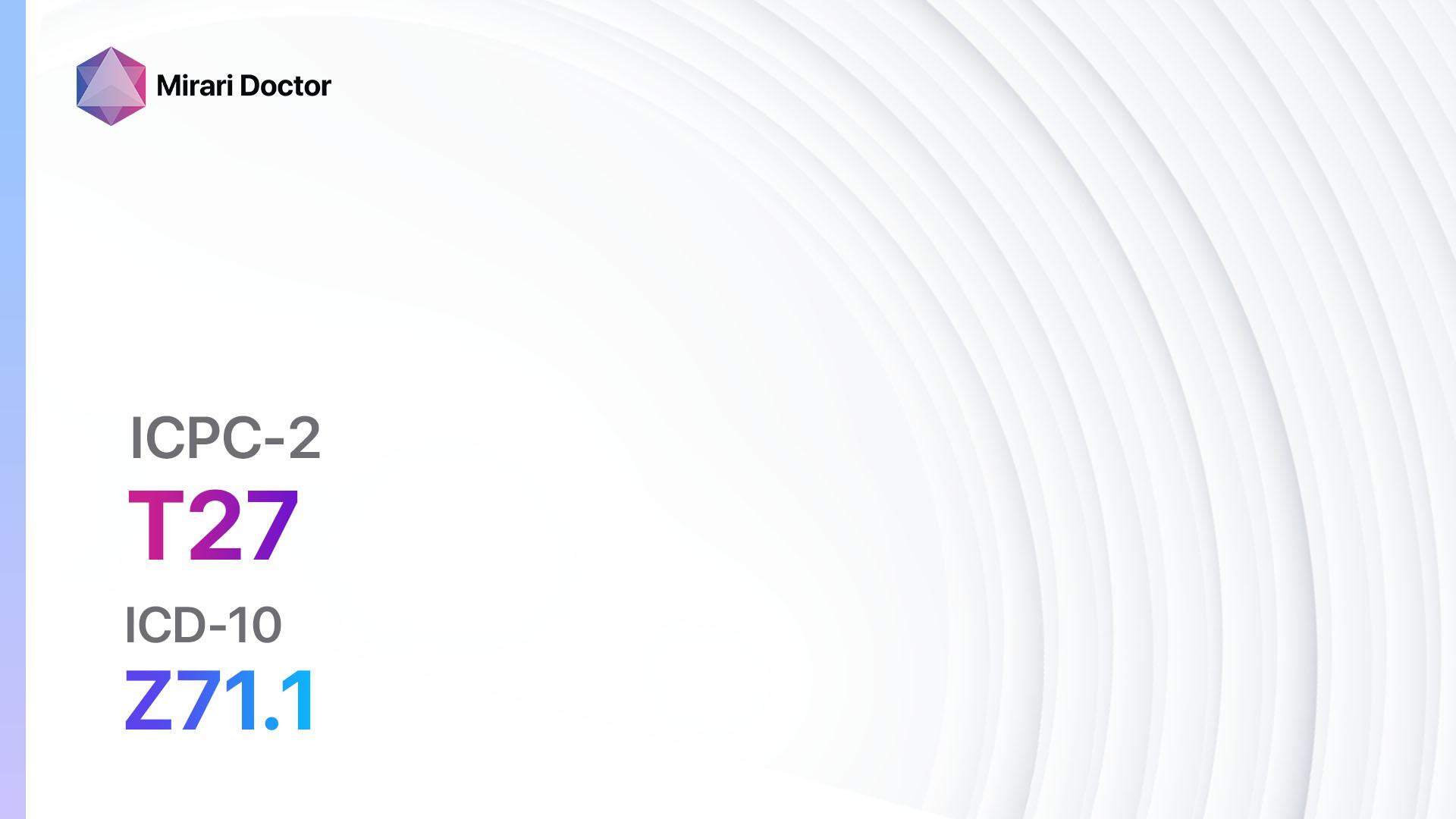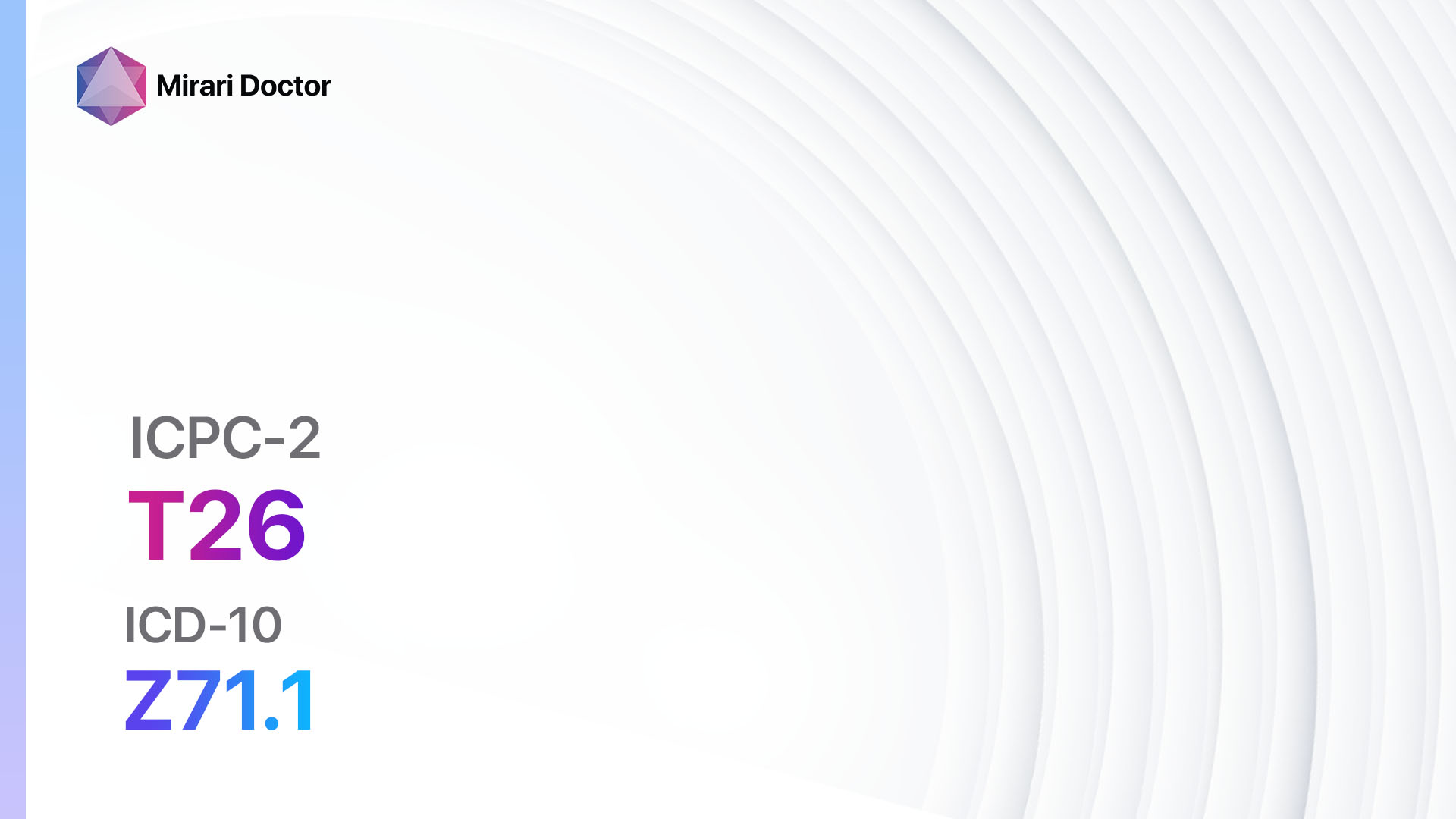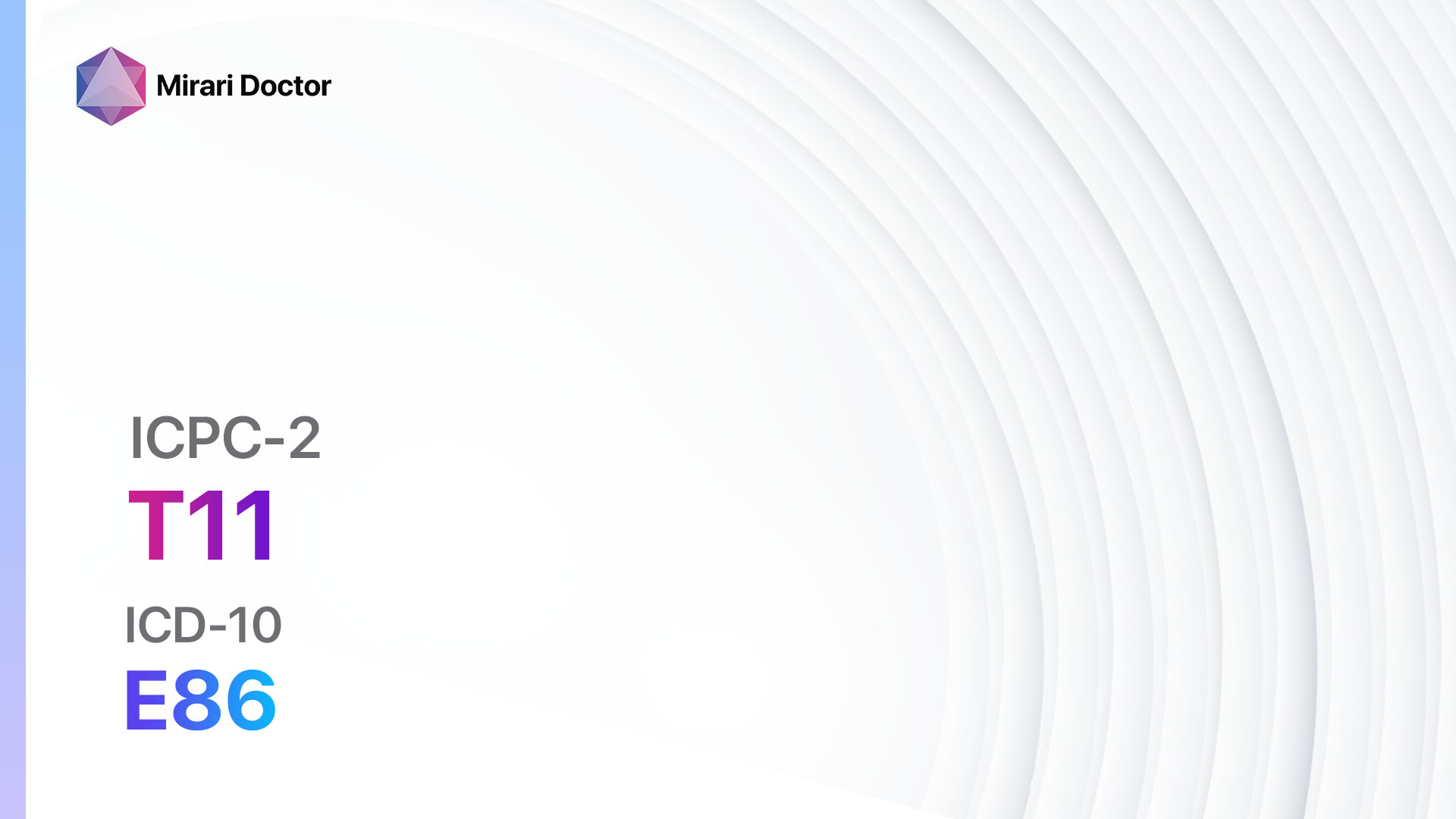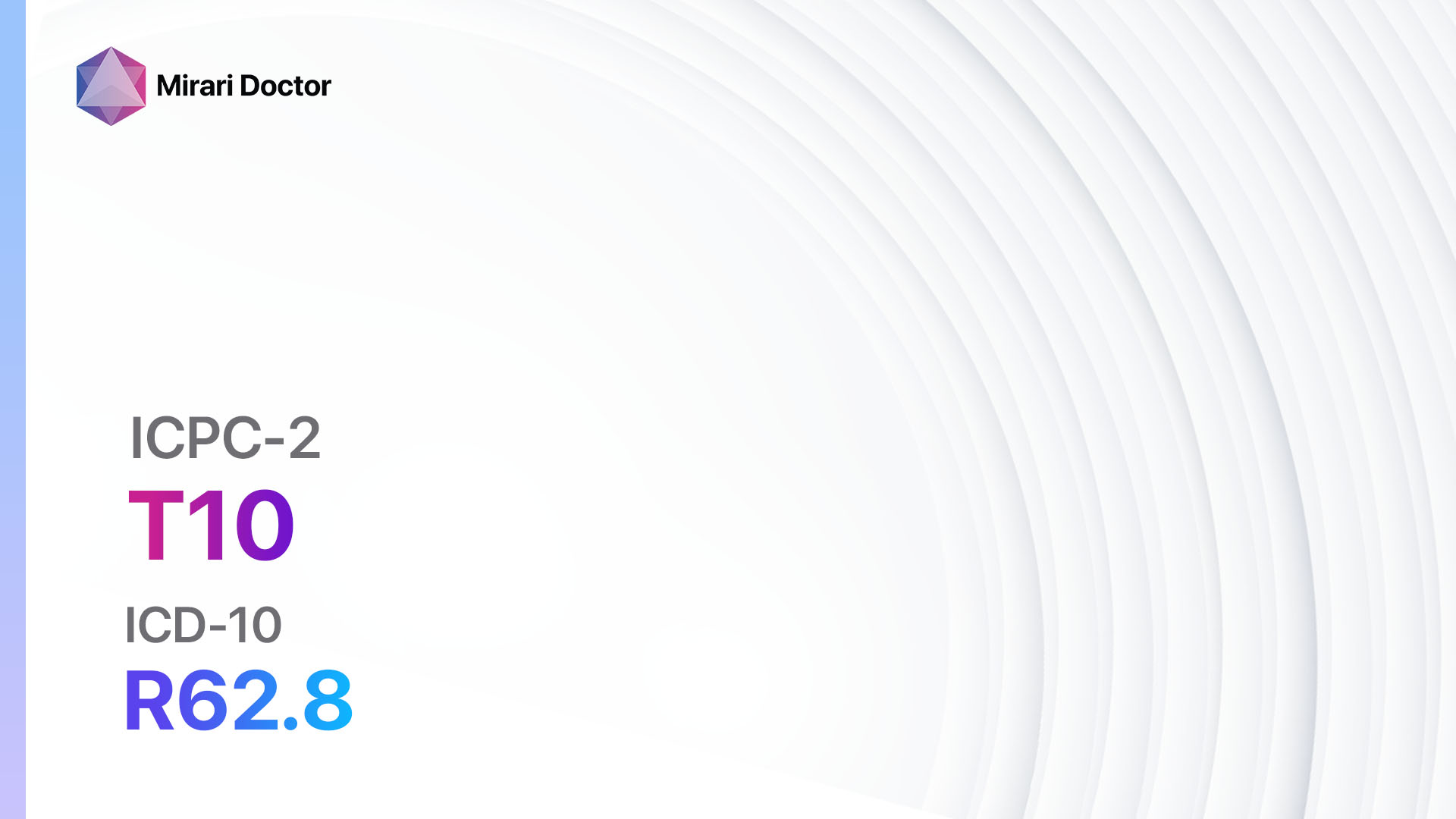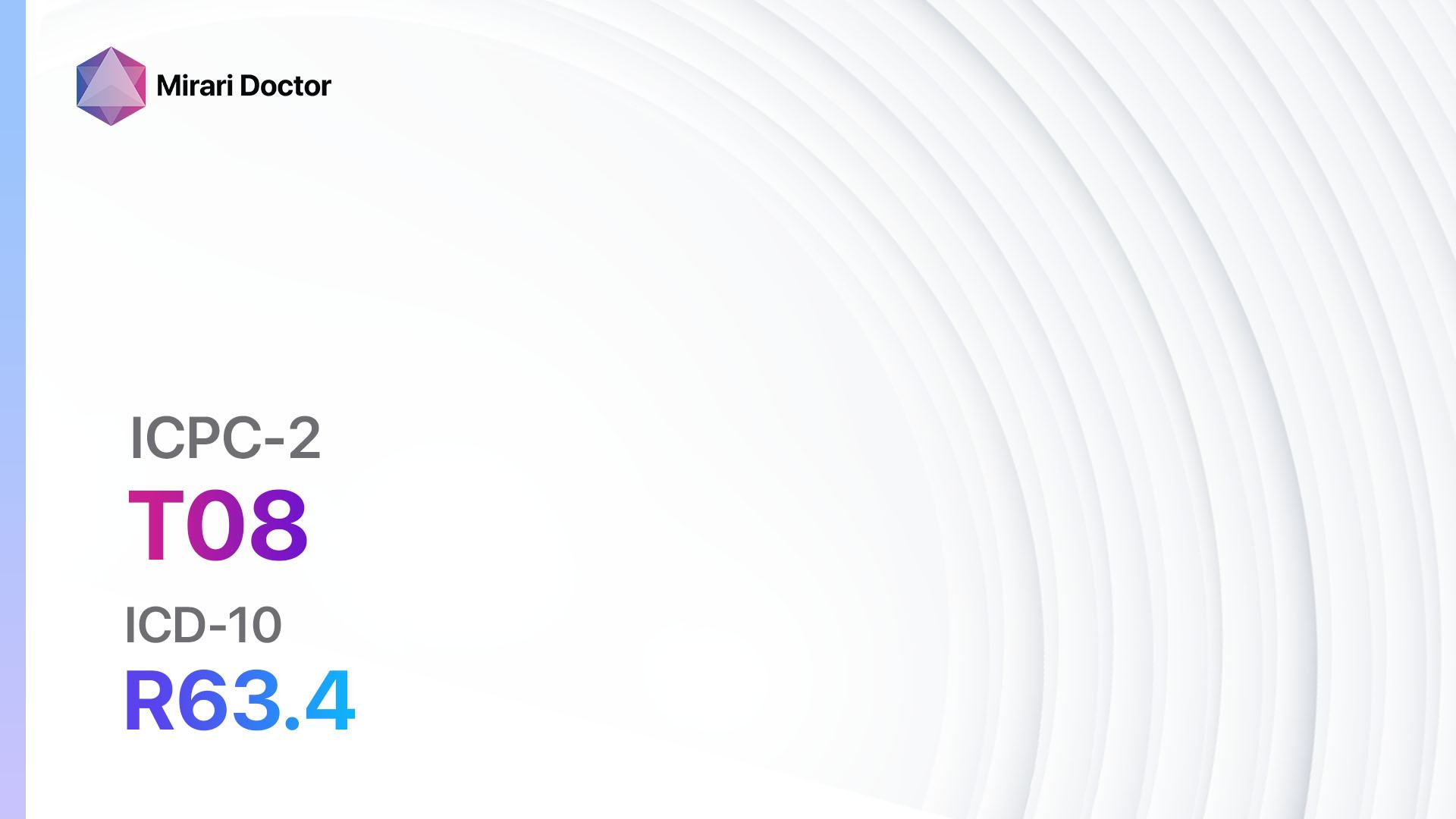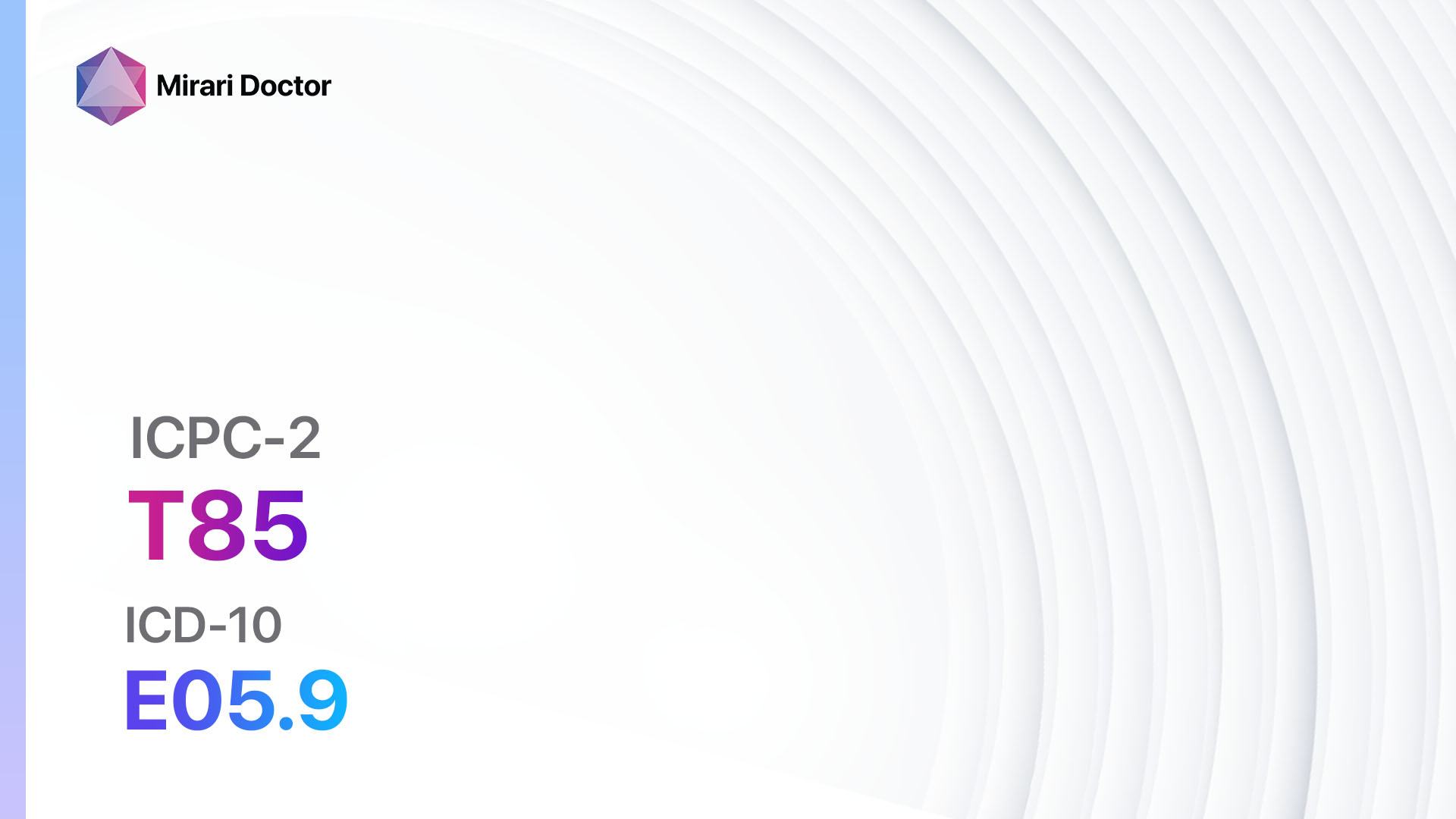
Introduction
Hyperthyroidism, also known as thyrotoxicosis, is a condition characterized by an overactive thyroid gland. The thyroid gland produces hormones that regulate metabolism, and when it becomes overactive, it can lead to a variety of symptoms and complications[1]. The aim of this guide is to provide a comprehensive overview of hyperthyroidism, including its symptoms, causes, diagnostic steps, possible interventions, and lifestyle modifications.
Codes
Symptoms
- Increased heart rate: Patients may experience a rapid or irregular heartbeat[2].
- Weight loss: Unexplained weight loss despite increased appetite[3].
- Nervousness and irritability: Patients may feel anxious, restless, or easily agitated[4].
- Fatigue and weakness: Patients may feel tired and weak, even with adequate rest.
- Heat intolerance: Patients may have an increased sensitivity to heat.
- Tremors: Patients may experience trembling or shaking hands[5].
- Changes in menstrual patterns: Women may have lighter or irregular periods.
- Increased bowel movements: Patients may have more frequent bowel movements.
- Muscle weakness: Patients may experience muscle weakness or difficulty with physical activities.
- Changes in vision: Patients may have vision problems, such as double vision or eye irritation[6].
Causes
- Graves’ disease: An autoimmune disorder in which the immune system mistakenly attacks the thyroid gland, causing it to produce excessive hormones[7]..
- Toxic multinodular goiter: The thyroid gland develops multiple nodules that produce excessive hormones.
- Thyroiditis: Inflammation of the thyroid gland, which can cause a temporary increase in hormone production.
- Excessive iodine intake: Consuming too much iodine, either through diet or medications, can lead to hyperthyroidism[8].
- Tumors: Rarely, tumors of the thyroid or pituitary gland can cause hyperthyroidism.
Diagnostic Steps
Medical History
- Gather information about the patient’s symptoms, including the duration and severity.
- Ask about any family history of thyroid disorders or autoimmune diseases.
- Inquire about any recent changes in weight, appetite, or menstrual patterns.
- Assess the patient’s medical history, including any previous thyroid disorders or treatments[9].
Physical Examination
- Check the patient’s heart rate and rhythm to assess for tachycardia or irregularities.
- Examine the patient’s thyroid gland for enlargement or nodules.
- Assess the patient’s eyes for signs of Graves’ ophthalmopathy, such as bulging or redness.
- Look for other physical signs, such as tremors, sweating, or skin changes[10].
Laboratory Tests
- Thyroid-stimulating hormone (TSH) level: A low TSH level indicates an overactive thyroid gland.
- Free thyroxine (T4) and triiodothyronine (T3) levels: Elevated levels of these hormones confirm hyperthyroidism.
- Thyroid peroxidase antibody (TPOAb) and thyroglobulin antibody (TgAb) tests: These tests can help diagnose autoimmune causes of hyperthyroidism.
- Radioactive iodine uptake (RAIU) test: Measures the amount of iodine taken up by the thyroid gland, which can help determine the cause of hyperthyroidism.
- Thyroid ultrasound: Used to evaluate the size and structure of the thyroid gland and detect any nodules or abnormalities.
Diagnostic Imaging
- Thyroid scan: A radioactive tracer is injected into the patient’s vein, which is taken up by the thyroid gland. This scan can help identify the location and activity of any nodules or abnormalities.
- Radioiodine uptake scan: Measures the amount of radioactive iodine taken up by the thyroid gland, which can help determine the cause of hyperthyroidism.
Other Tests
- Electrocardiogram (ECG): Used to assess the heart’s electrical activity and detect any abnormalities, such as arrhythmias.
- Eye examination: Patients with suspected Graves’ disease may be referred to an ophthalmologist for a comprehensive eye examination.
Follow-up and Patient Education
- Schedule regular follow-up appointments to monitor the patient’s thyroid function and adjust treatment if necessary.
- Educate the patient about the importance of taking medications as prescribed and attending regular check-ups.
- Provide information about potential complications of hyperthyroidism, such as osteoporosis or heart problems.
- Encourage the patient to seek medical attention if they experience any new or worsening symptoms.
Possible Interventions
Traditional Interventions
Medications:
Top 5 drugs for Hyperthyroidism/thyrotoxicosis:
- Methimazole (Tapazole):
- Cost: $10-$50/month.
- Contraindications: Hypersensitivity to methimazole, pregnancy.
- Side effects: Rash, itching, upset stomach.
- Severe side effects: Agranulocytosis (severe decrease in white blood cells), liver damage.
- Drug interactions: Warfarin, theophylline.
- Warning: Regular blood tests required to monitor thyroid function and liver enzymes.
- Propylthiouracil (PTU):
- Cost: $10-$50/month.
- Contraindications: Hypersensitivity to PTU, pregnancy.
- Side effects: Rash, upset stomach, joint pain.
- Severe side effects: Severe liver injury, agranulocytosis.
- Drug interactions: Warfarin, theophylline.
- Warning: Regular blood tests required to monitor thyroid function and liver enzymes.
- Beta-blockers (e.g., Propranolol, Atenolol):
- Cost: Generic versions are typically <$30/month.
- Contraindications: Severe bradycardia, heart block.
- Side effects: Fatigue, dizziness, low blood pressure.
- Severe side effects: Bronchospasm, heart failure.
- Drug interactions: Calcium channel blockers, insulin.
- Warning: Should not be abruptly stopped.
- Radioactive iodine therapy:
- Cost: $800-$2,000.
- Contraindications: Pregnancy, breastfeeding.
- Side effects: Temporary worsening of hyperthyroid symptoms, neck tenderness.
- Severe side effects: Hypothyroidism (underactive thyroid), radiation thyroiditis.
- Drug interactions: None.
- Warning: Patients may need to avoid close contact with others for a few days after treatment.
- Surgery (thyroidectomy):
- Cost: $10,000-$30,000.
- Contraindications: None.
- Side effects: Neck pain, hoarseness, low calcium levels.
- Severe side effects: Bleeding, infection, damage to the parathyroid glands.
- Drug interactions: None.
- Warning: Patients may need to take thyroid hormone replacement medication after surgery.
Alternative Drugs:
- Lithium carbonate: Can be used in combination with other medications to reduce thyroid hormone production.
- Iodine solution (Lugol’s solution): Used to reduce thyroid hormone release before surgery or radioactive iodine therapy.
- Glucocorticoids (e.g., Prednisone): May be used to temporarily reduce thyroid hormone levels in severe cases.
Surgical Procedures:
- Radioactive iodine therapy: A radioactive form of iodine is taken orally, which is absorbed by the thyroid gland and destroys the overactive cells.
- Cost: $800-$2,000.
- Thyroidectomy: Surgical removal of all or part of the thyroid gland.
- Cost: $10,000-$30,000.
Alternative Interventions
- Acupuncture: May help reduce symptoms of hyperthyroidism and improve overall well-being.
- Cost: $60-$120 per session.
- Herbal supplements: Some herbs, such as lemon balm or bugleweed, may help regulate thyroid function.
- Cost: Varies depending on the specific supplement.
- Mind-body techniques: Practices such as yoga, meditation, or tai chi may help reduce stress and improve overall health.
- Cost: Varies depending on the specific practice.
- Dietary modifications: Avoiding iodine-rich foods, such as seafood and iodized salt, may help reduce thyroid hormone production.
- Cost: Varies depending on individual dietary choices.
- Stress management: Engaging in stress-reducing activities, such as exercise or counseling, may help improve symptoms.
- Cost: Varies depending on the specific activity or therapy.
Lifestyle Interventions
- Regular exercise: Engaging in regular physical activity can help improve overall health and reduce symptoms of hyperthyroidism.
- Cost: Varies depending on individual preferences (e.g., gym membership, exercise equipment).
- Healthy diet: Consuming a balanced diet rich in fruits, vegetables, whole grains, and lean proteins can support overall health and thyroid function.
- Cost: Varies depending on individual dietary choices.
- Stress reduction: Managing stress through techniques such as relaxation exercises, deep breathing, or mindfulness can help improve symptoms.
- Cost: Varies depending on the specific stress reduction technique.
- Adequate sleep: Getting enough sleep and establishing a regular sleep routine can support overall health and well-being.
- Cost: Varies depending on individual sleep habits and preferences.
- Avoiding triggers: Identifying and avoiding triggers that worsen symptoms, such as caffeine or certain medications, can help manage hyperthyroidism.
- Cost: Varies depending on individual choices and preferences.
It is important to note that the cost ranges provided are approximate and may vary depending on the location and availability of the interventions.
Mirari Cold Plasma Alternative Intervention
Understanding Mirari Cold Plasma
- Safe and Non-Invasive Treatment: Mirari Cold Plasma is a safe and non-invasive treatment option for various skin conditions. It does not require incisions, minimizing the risk of scarring, bleeding, or tissue damage.
- Efficient Extraction of Foreign Bodies: Mirari Cold Plasma facilitates the removal of foreign bodies from the skin by degrading and dissociating organic matter, allowing easier access and extraction.
- Pain Reduction and Comfort: Mirari Cold Plasma has a local analgesic effect, providing pain relief during the treatment, making it more comfortable for the patient.
- Reduced Risk of Infection: Mirari Cold Plasma has antimicrobial properties, effectively killing bacteria and reducing the risk of infection.
- Accelerated Healing and Minimal Scarring: Mirari Cold Plasma stimulates wound healing and tissue regeneration, reducing healing time and minimizing the formation of scars.
Mirari Cold Plasma Prescription
Video instructions for using Mirari Cold Plasma Device – T85 Hyperthyroidism/thyrotoxicosis (ICD-10:E05.9)
| Mild | Moderate | Severe |
| Mode setting: 4 (Diabetes Therapy) Location: 6 (Throat, Lymphatic & Thyroid) Morning: 15 minutes, Evening: 15 minutes |
Mode setting: 4 (Diabetes Therapy) Location: 6 (Throat, Lymphatic & Thyroid) Morning: 30 minutes, Lunch: 30 minutes, Evening: 30 minutes |
Mode setting: 4 (Diabetes Therapy) Location: 6 (Throat, Lymphatic & Thyroid) Morning: 30 minutes, Lunch: 30 minutes, Evening: 30 minutes |
| Mode setting: 2 (Wound Healing) Location: 6 (Throat, Lymphatic & Thyroid) Morning: 15 minutes, Evening: 15 minutes |
Mode setting: 2 (Wound Healing) Location: 6 (Throat, Lymphatic & Thyroid) Morning: 30 minutes, Lunch: 30 minutes, Evening: 30 minutes |
Mode setting:2 (Wound Healing) Location: 6 (Throat, Lymphatic & Thyroid) Morning: 30 minutes, Lunch: 30 minutes, Evening: 30 minutes |
| Mode setting: 3 (Antiviral Therapy) Location: 6 (Throat, Lymphatic & Thyroid) Morning: 15 minutes, Evening: 15 minutes |
Mode setting: 3 (Antiviral Therapy) Location: 6 (Throat, Lymphatic & Thyroid) Morning: 30 minutes, Lunch: 30 minutes, Evening: 30 minutes |
Mode setting: 3 (Antiviral Therapy) Location: 6 (Throat, Lymphatic & Thyroid) Morning: 30 minutes, Lunch: 30 minutes, Evening: 30 minutes |
| Mode setting: 7 (Immunotherapy) Location: 1 (Sacrum) Morning: 15 minutes, Evening: 15 minutes |
Mode setting:7 (Immunotherapy) Location: 1 (Sacrum) Morning: 30 minutes, Lunch: 30 minutes, Evening: 30 minutes |
Mode setting:7 (Immunotherapy) Location: 1 (Sacrum) Morning: 30 minutes, Lunch: 30 minutes, Evening: 30 minutes |
| Total Morning: 60 minutes approx. $10 USD, Evening: 60 minutes approx. $10 USD |
Total Morning: 120 minutes approx. $20 USD, Lunch: 120 minutes approx. $20 USD, Evening: 120 minutes approx. $20 USD, |
Total Morning: 120 minutes approx. $20 USD, Lunch: 120 minutes approx. $20 USD, Evening: 120 minutes approx. $20 USD, |
| Usual treatment for 7-60 days approx. $140 USD – $1200 USD | Usual treatment for 6-8 weeks approx. $2,520 USD – $3,360 USD |
Usual treatment for 3-6 months approx. $5,400 USD – $10,800 USD
|
 |
|
Use the Mirari Cold Plasma device to treat Hyperthyroidism/thyrotoxicosis effectively.
WARNING: MIRARI COLD PLASMA IS DESIGNED FOR THE HUMAN BODY WITHOUT ANY ARTIFICIAL OR THIRD PARTY PRODUCTS. USE OF OTHER PRODUCTS IN COMBINATION WITH MIRARI COLD PLASMA MAY CAUSE UNPREDICTABLE EFFECTS, HARM OR INJURY. PLEASE CONSULT A MEDICAL PROFESSIONAL BEFORE COMBINING ANY OTHER PRODUCTS WITH USE OF MIRARI.
Step 1: Cleanse the Skin
- Start by cleaning the affected area of the skin with a gentle cleanser or mild soap and water. Gently pat the area dry with a clean towel.
Step 2: Prepare the Mirari Cold Plasma device
- Ensure that the Mirari Cold Plasma device is fully charged or has fresh batteries as per the manufacturer’s instructions. Make sure the device is clean and in good working condition.
- Switch on the Mirari device using the power button or by following the specific instructions provided with the device.
- Some Mirari devices may have adjustable settings for intensity or treatment duration. Follow the manufacturer’s instructions to select the appropriate settings based on your needs and the recommended guidelines.
Step 3: Apply the Device
- Place the Mirari device in direct contact with the affected area of the skin. Gently glide or hold the device over the skin surface, ensuring even coverage of the area experiencing.
- Slowly move the Mirari device in a circular motion or follow a specific pattern as indicated in the user manual. This helps ensure thorough treatment coverage.
Step 4: Monitor and Assess:
- Keep track of your progress and evaluate the effectiveness of the Mirari device in managing your Hyperthyroidism/thyrotoxicosis. If you have any concerns or notice any adverse reactions, consult with your health care professional.
Note
This guide is for informational purposes only and should not replace the advice of a medical professional. Always consult with your healthcare provider or a qualified medical professional for personal advice, diagnosis, or treatment. Do not solely rely on the information presented here for decisions about your health. Use of this information is at your own risk. The authors of this guide, nor any associated entities or platforms, are not responsible for any potential adverse effects or outcomes based on the content.
Mirari Cold Plasma System Disclaimer
- Purpose: The Mirari Cold Plasma System is a Class 2 medical device designed for use by trained healthcare professionals. It is registered for use in Thailand and Vietnam. It is not intended for use outside of these locations.
- Informational Use: The content and information provided with the device are for educational and informational purposes only. They are not a substitute for professional medical advice or care.
- Variable Outcomes: While the device is approved for specific uses, individual outcomes can differ. We do not assert or guarantee specific medical outcomes.
- Consultation: Prior to utilizing the device or making decisions based on its content, it is essential to consult with a Certified Mirari Tele-Therapist and your medical healthcare provider regarding specific protocols.
- Liability: By using this device, users are acknowledging and accepting all potential risks. Neither the manufacturer nor the distributor will be held accountable for any adverse reactions, injuries, or damages stemming from its use.
- Geographical Availability: This device has received approval for designated purposes by the Thai and Vietnam FDA. As of now, outside of Thailand and Vietnam, the Mirari Cold Plasma System is not available for purchase or use.
References
- Ross, D. S., Burch, H. B., Cooper, D. S., Greenlee, M. C., Laurberg, P., Maia, A. L., … & Walter, M. A. (2016). 2016 American Thyroid Association guidelines for diagnosis and management of hyperthyroidism and other causes of thyrotoxicosis. Thyroid, 26(10), 1343-1421.
- Klein, I., & Danzi, S. (2007). Thyroid disease and the heart. Circulation, 116(15), 1725-1735.
- Bahn, R. S., Burch, H. B., Cooper, D. S., Garber, J. R., Greenlee, M. C., Klein, I., … & Stan, M. N. (2011). Hyperthyroidism and other causes of thyrotoxicosis: management guidelines of the American Thyroid Association and American Association of Clinical Endocrinologists. Thyroid, 21(6), 593-646.
- Bunevicius, R., & Prange Jr, A. J. (2006). Psychiatric manifestations of Graves’ hyperthyroidism: pathophysiology and treatment options. CNS drugs, 20(11), 897-909.
- Brent, G. A. (2008). Clinical practice. Graves’ disease. New England Journal of Medicine, 358(24), 2594-2605.
- Bartalena, L., Baldeschi, L., Boboridis, K., Eckstein, A., Kahaly, G. J., Marcocci, C., … & Wiersinga, W. M. (2016). The 2016 European Thyroid Association/European Group on Graves’ Orbitopathy Guidelines for the Management of Graves’ Orbitopathy. European Thyroid Journal, 5(1), 9-26.
- Smith, T. J., & Hegedüs, L. (2016). Graves’ disease. New England Journal of Medicine, 375(16), 1552-1565.
- Leung, A. M., & Braverman, L. E. (2014). Consequences of excess iodine. Nature Reviews Endocrinology, 10(3), 136-142.
- Franklyn, J. A., & Boelaert, K. (2012). Thyrotoxicosis. The Lancet, 379(9821), 1155-1166.
- Bahn, R. S. (2010). Graves’ ophthalmopathy. New England Journal of Medicine, 362(8), 726-738.
Related articles
Made in USA


